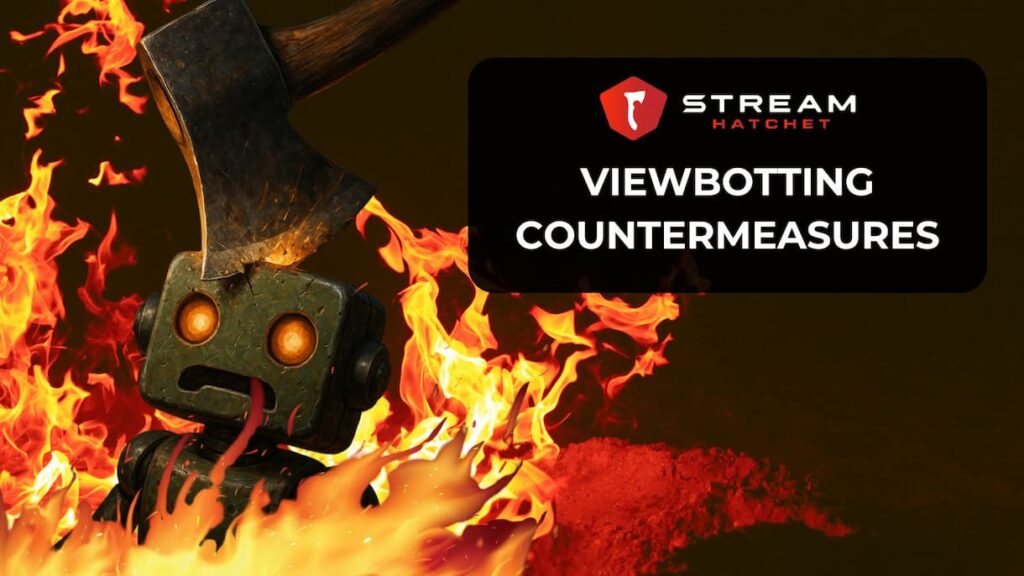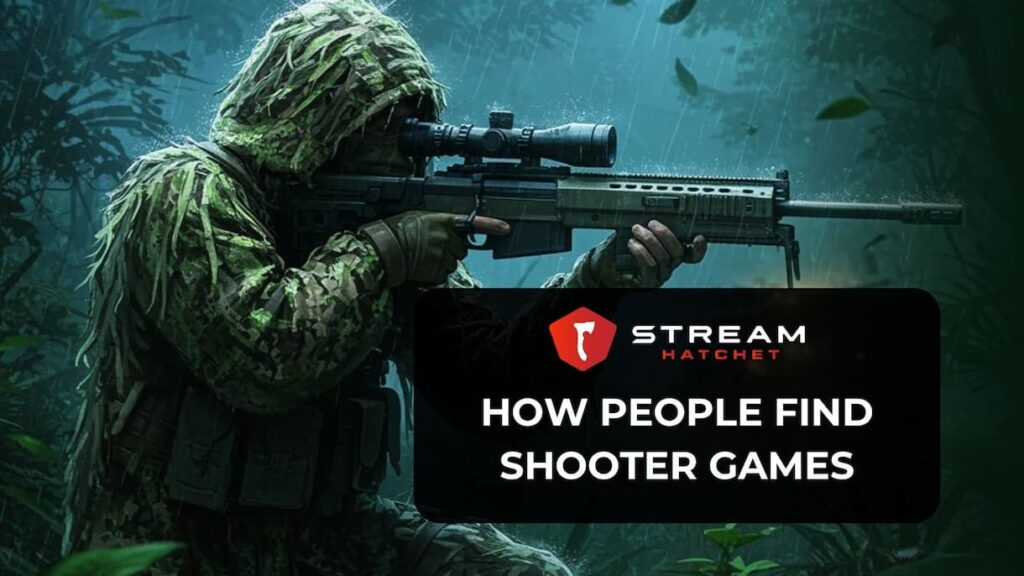If you’re reading this, you’re probably already well aware of the latest controversy surrounding viewbotting on Twitch. After some high-profile call-outs in July this year, Twitch announced that they would be cracking down on viewbotting with a series of drastic new updates. As these changes rolled out, masses of viewership were lost week over week across the platform which led pundits to question the credibility of Twitch’s popularity.
Naturally, advertisers got spooked: If so much viewership is fake, how do you accurately measure the impact of your campaign? At Stream Hatchet, we have tools that measure real audience engagement by excluding viewbotted viewership from advertising campaign reports. In this article, we’ll be giving a brief background on the viewbotting controversy, what this means for different parties involved in live streaming, and provide a glimpse into how we at Stream Hatchet exclude bots and suspicious channels from our data.
UPDATE: We have new info about viewbotting, including how much Twitch reduced viewbotting by and an in-depth look at a real example of viewbotting from Kick. Check it out here!
The Viewbotting Controversy Summarized

The viewbotting controversy kicked off when prominent advertiser and esports investor Davin Nash put out a tweet claiming that of the top 500 streamers, over 400 of them had viewbotted viewership. After breaking down the negative repercussions of accepting this state of affairs, the online reaction forced Twitch to respond with action. What followed was sweeping updates that slashed Twitch viewership over the next month (which have already been extensively covered elsewhere if you’re looking for details).
But the main takeaway for many speculators was that streamers who lost viewership were guilty of viewbotting and they immediately put on blast. This knee-jerk outrage came as some of the most famous streamers lost more than 50% of their viewership in the wake of Twitch’s updates. Experts were quick to point out that the presence of viewbots on a streamer’s channel does not necessarily mean the streamer themselves is guilty: Viewbotting by 3rd parties is stunningly easy to execute, which means we need to show restraint instead of resorting to a witch hunt. But who are these different parties, and how might viewbotting help or hinder their success on live streaming?
Impacts of Viewbotting on Brands, Streamers, and Platforms

The most obvious party that benefits from viewbotting is the live-streaming platform itself. More viewers and more hours watched make a platform more attractive to advertisers and “cooler” to new streamers and their fans. More attention means more money… if they don’t get called out, of course. If a platform becomes associated with viewbots, this can irreparably damage its credibility. Note that although Twitch has been coming under fire as the front runner in the streaming space, all live-streaming platforms contend with viewbotting and several are maligned by advertisers for precisely this reason. Twitch is complicated enough as it is (though we boil it down here), and fake views only worsen the matter.
Streamers similarly have a lot to gain by inflating their viewership, convincing fans and brands alike that their community is thriving and that their content is desirable. Image is often more important than reality for creators, and viewbots bolster a streamer’s popularity. But this is, put simply, cheating: Viewbots abuse the competitive system of Twitch discoverability and bury smaller streamers trying to break out (that would otherwise be the same size as the offending channels). Twitch has been making leaps and bounds in making the platform more viable for smaller streamers, with massive announcements earlier this year. Hopefully, this strike against viewbots will level the playing field for new streamers.

At first glance, the victims of viewbotting are the brands: They’re being misled into believing that their costly messaging is reaching a larger audience than it really is. As victims of fraud, this totally warps the perception of how well their influencer marketing campaigns performed. Devin Nash noted that in his own campaigns, he’d often observe that sponsored streams with lower viewer counts actually had higher conversions. His conclusion? While smaller streamers may have more passionate fanbases, the gulf in expectations could only be explained by botting on the higher viewer count channels. Anecdotal evidence is far from conclusive, but it’s understandable that stories like these cause brands to hesitate.
Of course, not all companies are so virtuous: There’s plenty of incentive for brands and talent agencies to artificially inflate their numbers. Advertisers can profit from perceived widespread exposure, making their brand feel more culturally-relevant to consumers. Employees within these companies may also feel pressure to deliver strong numbers to prove the success of their brand activations. Finally, talent agencies have some of the strongest incentives to use viewbots since they get a cut based on ad revenue from their influencers’ campaigns.
How to Find and Remove Viewbot Viewership
All of the aforementioned motivations are mere speculation. But we make these points to drive home that viewbotting creates an atmosphere of paranoia. That’s why our team at Stream Hatchet goes to great lengths to remove viewbot viewership from our own reporting to give peace of mind to brands and publishers trying to accurately measure the success of their activation.

For one issue: Fake channels can be deployed to boost viewership for certain games or events to drive up viewership and the count of unique channels covering that category. Our system tags these as “suspicious channels” and, although we keep their data tracked, we exclude them from any reporting or industry analyses.
Common features among these suspicious channels include:
- Low airtimes (despite supposedly high viewerships)
- New channels with no followers
- Bans instituted by the platforms themselves
- Prevalence among certain games/categories, particularly those with more casual fanbases (e.g. Slots & Casino, Mobile Games, Minecraft, Roblox)

While fake channels are relatively easy to detect, the true achievement lies in finding real channels that are using viewbots to inflate their numbers (as we’ve been mostly discussing in this article). These cases are insidious: We rely on our expert understanding of natural viewership fluctuations to detect deviations from the norm and prompt a manual investigation.
Some examples of these deviations or “abnormal” behaviour include:
- Channels that have consistent viewership for multiple hours, days, or even months, which then suddenly see a jump in viewers by a fixed amount rather than a more gradual increase as viewers flood in. (xQc points out a great example of this kind of viewership jump).
- Channels with high non-registered viewer ratios, which is consistent with the behaviour of services offering viewbot account creation.
- Chats with viewer-identified bot spam, frequently stemming from viewbot raids (a form of streamer harassment).
_
Of course none of these symptoms are, by themselves, conclusive evidence of viewbotting. For example, official Twitch Raids can cause isolated spikes, but these will then drop back to regular viewership levels after the Raid is over. Still, these signs provide a tip-off that there may be suspicious activity, allowing our experts to dive into these channels for a manual review.
_
Twitch’s decision to give their community a heads-up about viewbot crackdowns, though controversial, was a well-reasoned way to deal with this issue. The advanced warning helped streamers who were not intentionally doing this, which is more important than punishing offending streamers.
While speculation abounds regarding the culprits of viewbotting, this line of reasoning isn’t the most productive for brands looking to partner with streamers on their next activation. What’s important is to find tools to exclude viewbotted viewership while leaving real viewership intact. This is why, when determining the reach and ROI of your campaign, we combine our viewbot exclusion methods with other forms of reporting like social media UGC curation to provide the most accurate measure of your brand’s impact.
For latest tips on navigating live-streaming data, follow Stream Hatchet and receive exclusive newsletter-only content:







